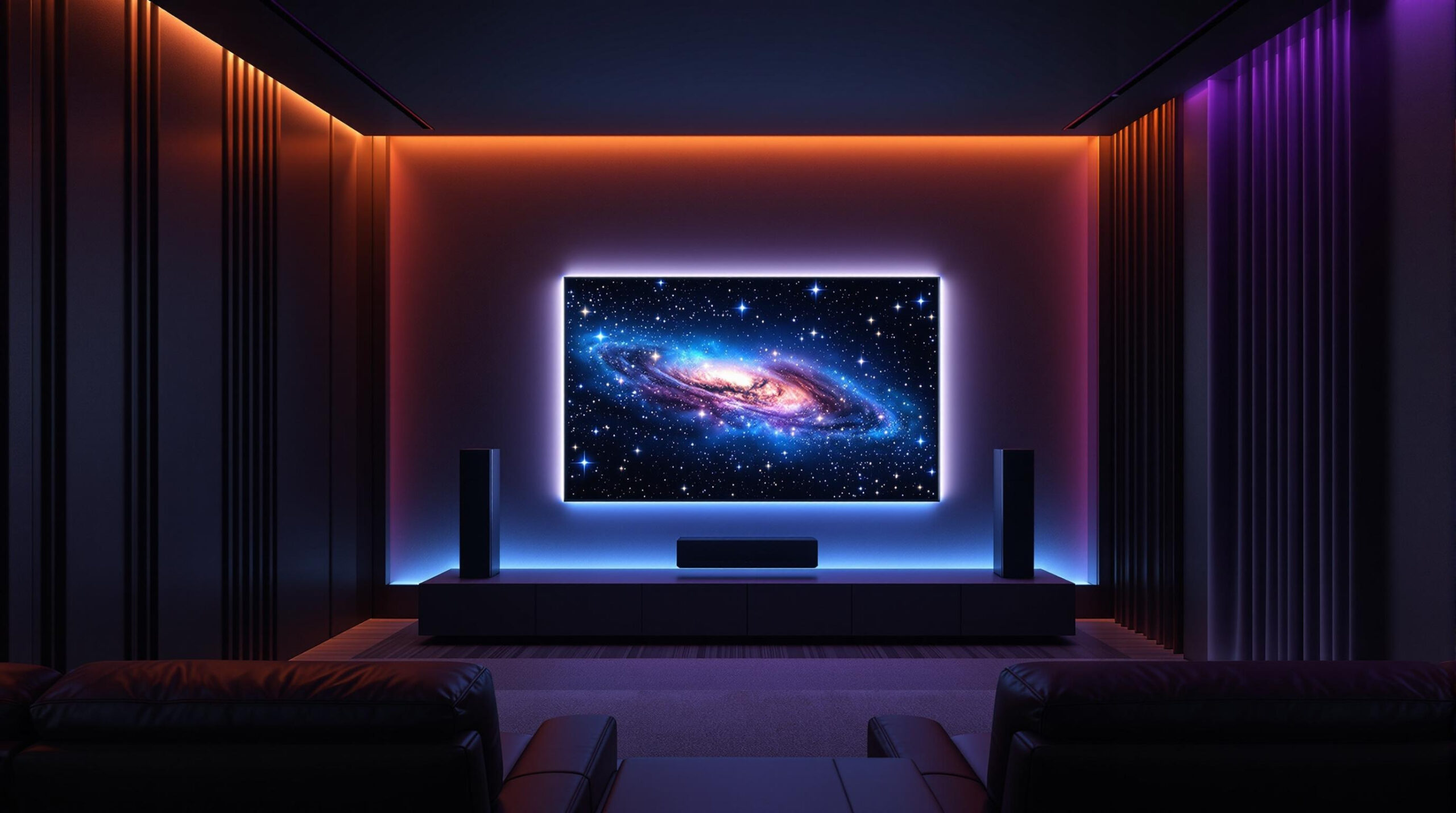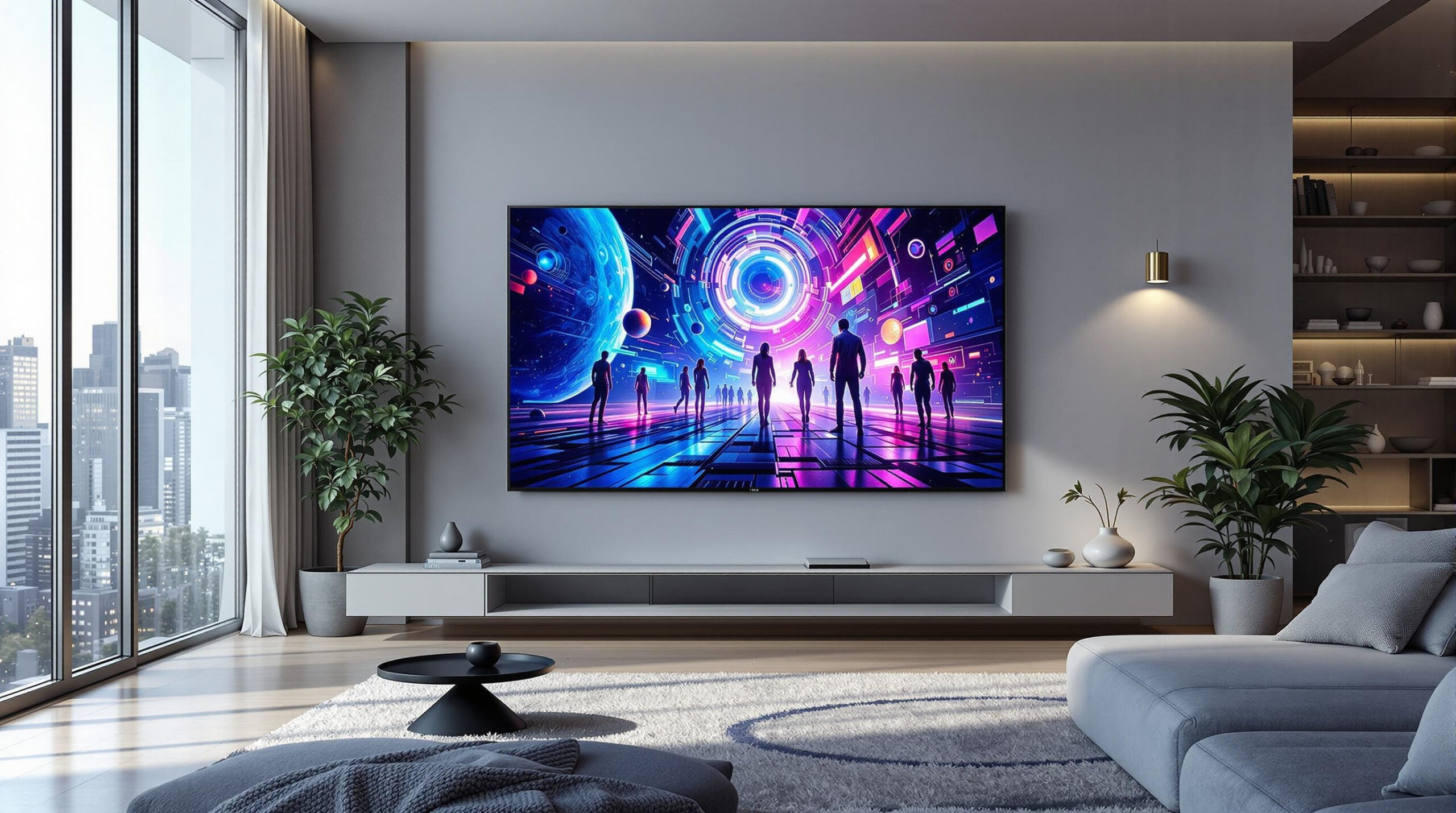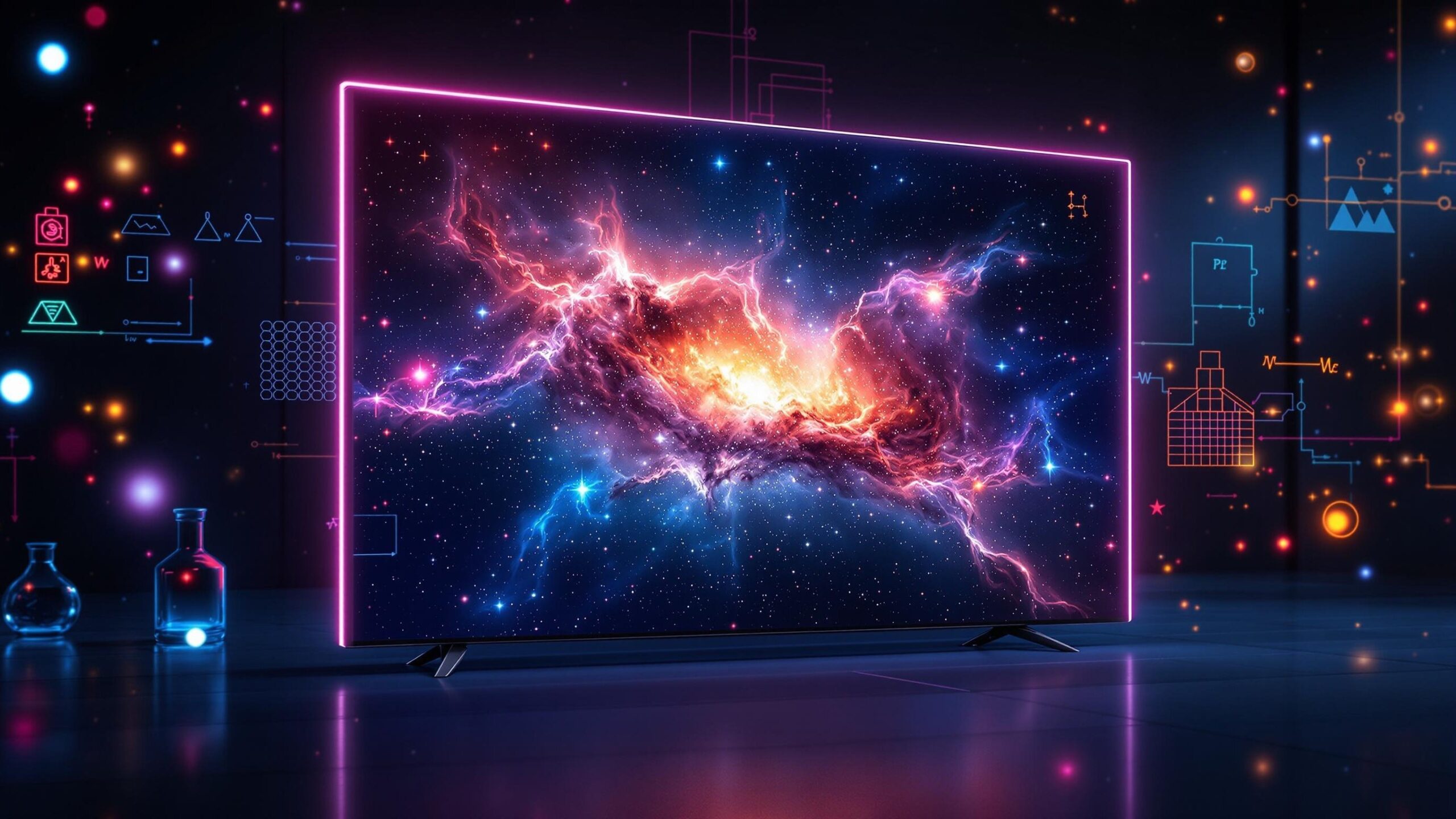Slip into your favorite armchair, cue the opening credits, and imagine every frame painted on absolute black velvet. That is the promise of an OLED TV in a dedicated home-cinema space. Organic Light-Emitting Diode displays aren’t merely thinner or prettier than yesterday’s LCDs—they’re the culmination of physics, chemistry, and precision engineering converging to serve the purest cinematic experience. Understanding how that trifecta works helps explain why serious film enthusiasts increasingly insist on OLED as the centerpiece of their theater rooms.
From CRT to OLED: A Brief Display Evolution
Cathode-ray tubes once ruled living rooms with phosphor-coated glass and bulky electron guns. Plasma brought emissive pixels but guzzled power and struggled with brightness. Liquid-crystal displays conquered mass markets through scalability, yet the backlight required by LCDs forever compromised black levels. OLED breaks free of that backlight, returning to self-emission while leveraging organic semiconductors refined at the molecular scale. In effect, OLED marries plasma’s pixel independence with LCD’s manufacturing efficiency, creating a new plateau for cinema-grade imagery.
The Anatomy of an OLED Pixel
Each OLED subpixel is a self-contained organic diode stack roughly one-third the thickness of a human hair. Starting at the glass substrate, manufacturers sputter a transparent anode—usually indium tin oxide—followed by multiple organic layers responsible for charge transport, excitation, and photon release. A reflective metal cathode caps the cell. Apply a few volts, electrons and holes recombine inside an emissive layer, and a photon of precisely tuned wavelength emerges through the anterior side. Multiply that mechanism by over eight million pixels on a 4K panel, and the entire screen becomes a highly orchestrated field of microscopic light factories.
Organic Chemistry in Motion: Conjugated Molecules
The “organic” in OLED references carbon-based molecules whose π-electron systems create extended conjugation paths. These delocalized electrons lower the bandgap, allowing efficient radiative recombination at voltages well below those needed by inorganic LEDs. Blue pixels often use anthracene derivatives, green employs iridium-complex phosphorescent emitters, and red relies on doped polyarylamines. Fine-tuning ligand fields and substituent groups lets chemists dictate emission spectra, quantum efficiency, and lifetime, effectively writing color science at the molecular level.
Quantum Mechanics of Color Purity
Color purity stems from narrow full-width half-maximum (FWHM) emission peaks and perfect on-off control. Because OLED pixels switch electrically rather than modulate a white backlight through color filters, there is no stray spectrum. Wavefunctions collapse directly into red, green, or blue photons with minimal out-of-band leakage. In layman terms: less muddied light, more saturated hues. That is why HDR mastering studios prefer OLED reference monitors when grading blockbuster films.
Engineering the Ultralight Stack
Marvel, too, at the engineering tolerances. Depositing organic films often involves vacuum thermal evaporation, where layers mere dozens of nanometers thick are spread uniformly across a substrate the size of your dining-room table. Any pinhole defeats pixel integrity. Manufacturers combat imperfections with redundancy—tandem stacks, thin-film encapsulation, and barrier layers that offset oxygen or moisture ingress. The result is a panel under 6 mm thick yet resilient enough to endure decades of nightly movie marathons.
Perfect Blacks: Switching Off at the Molecular Level
Turn on a traditional LCD and the backlight stays illuminated even during dark scenes, forcing the panel to battle internal light leakage. OLED simply de-energizes specific pixels. When the voltage drops to zero, recombination ceases, no photon emerges, and black remains black. Because every pixel acts independently, a single star can sparkle beside the abyss of space without halo artifacts. That pixel-level autonomy is what gives OLED an effective infinite contrast ratio—measured not by numeric exaggeration but by the literal absence of luminance.
HDR Mastery and True Contrast
High Dynamic Range demands both dazzling peaks and abyssal lows. OLED panels routinely hit peak brightness between 600 and 1,000 nits—ample for the 1,000-nit target most HDR10 masters use—while bottoming out at 0 nits for blacks. Crucially, they achieve those numbers in the same frame. Where local-dimming LCDs juggle limited backlight zones, OLED’s pixel-level dimming ensures specular highlights like fireworks or a sunlight glint cascade across the screen without blooming or crushed detail.
Color Volume and DCI-P3 Coverage
Movie theaters project content mastered to the DCI-P3 gamut. OLED TVs cover 98–100 percent of that space thanks to those chemically tuned emitters. Moreover, because brightness and saturation remain stable across luminance steps, OLED preserves color volume—reds stay red at 800 nits rather than washing into orange. That fidelity means you perceive the director’s palette exactly as intended, from crimson capes to verdant alien jungles.
Response Time and Motion Clarity
OLED’s carrier mobility and thin organic layers enable sub-microsecond pixel response—orders of magnitude faster than the liquid-crystal twist in LCDs. Fast response eliminates sample-and-hold blur, so chase scenes and panning shots look crisp without resorting to aggressive motion interpolation that can introduce the dreaded soap-opera effect. Gamers note input latency as low as 0.1 milliseconds in 120 Hz modes, making OLED equally at home with cinematic adventures and high-frame-rate shooters.
Ultra-Wide Viewing Angles
Because OLED light originates directly at the pixel surface instead of passing through polarizers and color filters, luminance and chromaticity decay minimally off-axis. Spectro-radiometric tests show less than a 1.5 delta-E color error even 60 degrees from center. In plain English, every seat in the home theater—beanbag or bar-stool—gets an equally faithful picture. That trait also enables unconventional room layouts where traditional LCDs would suffer from milky blacks and desaturated tones.
Thermal Dynamics and Panel Longevity
Organic semiconductors are sensitive to elevated temperatures that accelerate luminance decay, especially in blue emitters. Manufacturers mitigate this with graphite heat-spreaders, aluminum oxide substrates, and smart pixel-refresh algorithms that redistribute drive current to cooler, less-used regions. Modern WRGB OLED panels boast half-life times exceeding 30,000 hours to 50 percent brightness—roughly a decade of four-hour nightly screenings—before calibrators would advise replacement.
Burn-In Myths vs. Material Science
Image retention arises when subpixels age unevenly after prolonged static content. Today’s TVs incorporate automatic brightness limiters, logo-dimming heuristics, and screensavers to equalize wear. Meanwhile, phosphorescent blue materials such as deuterated anthracene and thermally activated delayed fluorescence (TADF) compounds have doubled lifetime compared with first-generation displays. The practical takeaway: treat OLED like any quality projector—vary content and enable built-in maintenance cycles—and burn-in becomes a theoretical footnote, not a living-room nightmare.
Energy Efficiency and Eco Impact
Contrary to intuition, OLED can outperform LED-LCD sets in real-world power consumption because it expends negligible energy on black portions of a scene. In a dim-room movie environment heavy in shadows, average panel consumption drops dramatically. Add recycled plastic chassis and halogen-free circuitry, and many flagships earn stringent EU energy ratings. Lower heat output also means your HVAC system spends less time offsetting display warmth—a silent but welcome ROI for cinephiles who stream trilogies in one sitting.
Integrating OLED into a Home-Cinema Ecosystem
Pair an OLED display with object-based surround formats such as Dolby Atmos, and the perceptual trick of total immersion becomes uncanny. Picture quality that anchors absolute black allows your brain to ignore the screen border, making ceiling-mounted speakers feel like part of the visual canvas. Smart-home protocols—HDMI-CEC, eARC, Wi-Fi 6E—facilitate single-remote control and lossless audio return, ensuring the OLED panel plays conductor to AVR, lighting dimmers, and motorized curtains in perfect sync.
Calibration: Extracting Reference-Class Performance
Although factory presets have improved, professional calibration unleashes the final few percent of OLED excellence. Using a tristimulus colorimeter and 3D LUT software, calibrators adjust grayscale tracking, color-management system gains, and tone-mapping curves to match ITU-R BT.1886 gamma and D65 white. The margin of improvement—particularly shadow-detail retrieval and neutral skin tones—can be startling. For DIY enthusiasts, built-in pattern generators and USB sensor support in many flagship models democratize the process without a four-figure service bill.
The Road Ahead: Tandem and Quantum-Dot OLED
Researchers are commercializing tandem-stack OLEDs that layer two or more emissive stacks in series, doubling peak brightness and extending lifespan without sacrificing contrast. Meanwhile, Quantum-Dot OLED (QD-OLED) replaces traditional color-filter architecture with quantum-dot conversion, converting blue OLED light into red and green with near-perfect efficiency. This hybrid promises even wider color volume and up to 2,000-nit highlights—projector-class luminance from a panel thinner than a paperback novel.
Conclusion: The Cinephile’s Logical Endpoint
Every design choice in an OLED TV—molecular dopants, nano-scale layers, intelligent drive electronics—serves a single purpose: deliver images so lifelike you forget about technology altogether. For home-cinema enthusiasts chasing reference quality, OLED provides the foundational canvas on which sound systems, acoustic treatments, and plush seating can perform. Its self-emissive pixels paint perfect blacks, its color science honors directorial intent, and its engineering roadmap keeps advancing toward brighter, longer-lived panels. Dim the lights, press play, and let OLED remind you why film remains the greatest magic trick we’ve ever invented.
OLED TV Reviews
Explore Philo Street’s Top 10 Best OLED TV Reviews! Dive into our comprehensive analysis of the leading OLED TV products, complete with a detailed side-by-side comparison chart to help you choose the perfect protection for your devices.




